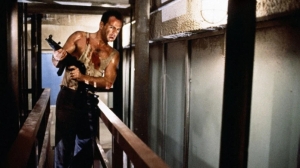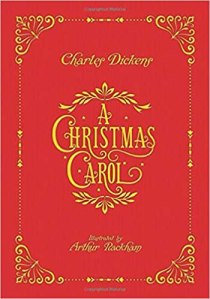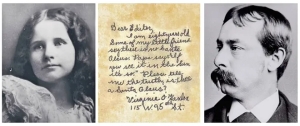
 “It was the best of times, it was the worst of times, it was the age of wisdom, it was the age of foolishness, it was the epoch of belief, it was the epoch of incredulity, it was the season of Light, it was the season of Darkness, it was the spring of hope, it was the winter of despair, we had everything before us, we had nothing before us, we were all going direct to Heaven, we were all going direct the other way – in short, the period was so far like the present period, that some of its noisiest authorities insisted on its being received, for good or for evil, in the superlative degree of comparison only.”
“It was the best of times, it was the worst of times, it was the age of wisdom, it was the age of foolishness, it was the epoch of belief, it was the epoch of incredulity, it was the season of Light, it was the season of Darkness, it was the spring of hope, it was the winter of despair, we had everything before us, we had nothing before us, we were all going direct to Heaven, we were all going direct the other way – in short, the period was so far like the present period, that some of its noisiest authorities insisted on its being received, for good or for evil, in the superlative degree of comparison only.”
Apologies to Charles Dickens for the posthumous appropriation of the immortal opening line in his 1859 novel, A Tale of Two Cities. There were simply no better words, surely not mine anyway, to describe our present age, an age perhaps not so different than Dickens writes about here, or similarly one 28 years after Dickens’ novel appeared, and which New York Sun editor Francis Pharcellus Church described in an unsigned editorial Sept. 21, 1897 as being an age where even children are “affected by the skepticism of a skeptical age. They do not believe except [what] they see. They think that nothing can be which is not comprehensible by their little minds. All minds, Virginia, whether they be men’s or children’s, are little. In this great universe of ours man is a mere insect, an ant, in his intellect, as compared with the boundless world about him, as measured by the intelligence capable of grasping the whole of truth and knowledge.”
Robert Fulford, the noted 87-year-old Canadian journalist, magazine editor, and essayist, had an interesting piece in the National Post last March 19 (https://nationalpost.com/opinion/robert-fulford-the-worlds-a-lot-better-off-than-you-think?fbclid=IwAR1ouh4RiaSGeSe9VTzICtKe8GkzUnPcQVvlc_FBWoZMxw2ALmjQZm9ahKQ) that wound up being headlined, “The world’s a lot better off than you think.” While Fulford may or not have written the headline, I think he is right in the body of the article when he says we often don’t see this because at “the core of this difficulty is journalism’s professional obsession. We who read the papers (or write them) know that news is, more often than not, bad news. An editor I worked for used to say, ‘Every day a newspaper tells the public what went wrong in the world yesterday.’ (He wasn’t bragging.) Thousands of decisions following that pattern accrue into an attitude, which eventually becomes a reader’s habit.”
Mathematician and complexity scientist John Casti’s 2012 book, X-Events: The Collapse of Everything looked at scientific modelling and prediction computer simulation as to how social “mood” can affect future trends and extreme events, sounds a clarion warning as to how easy it would be to slip suddenly into a new Dark Ages, and how the global food supply system could collapse (https://soundingsjohnbarker.wordpress.com/2015/12/12/what-if-the-22nd-century-means-staying-at-home-with-long-distance-travel-a-thing-of-the-past/). Or the “digital darkness” that would come from a widespread and prolonged failure of the internet. Or what a continent-wide electromagnetic pulse (EMG) would do to electronics, and how we may have reached peak oil in 2000, and how any of those scenarios leave us vulnerable in overly complex technological societies to an “X-event” that would send us back to a pre-modern world – and again, a world without air or other long-distance travel – virtually overnight.
Of course, the probability of improbable events occurring in situations where one outcome is greatly favored over the other, is not necessarily a bad thing, as Malcolm Gladwell illustrated in his 2013 non-fiction book, David and Goliath: Underdogs, Misfits, and the Art of Battling Giants. The book contains stories of underdogs who wind up beating the odds, the most famous, of course, being the story of David and Goliath. While I suspect someone like John Casti is also largely right that today’s advanced, overly complex societies have grown highly vulnerable to extreme events that could ultimately topple civilization like a house of cards, I don’t share his certainty they will. That perhaps sets me apart from the more apocalyptically-minded, even if it’s true I have never met a premillennial dispensational-driven Rapture movie I can resist watching. I think that Montréal-born Steven Pinker, a cognitive scientist and Johnstone Family Professor of Psychology at Harvard, is right when he persuasively argues the modern world is driven by pessimism, but it’s actually the best moment in time to be alive.(https://www.cbc.ca/radio/thecurrent/the-current-for-march-29-2018-1.4597367/why-you-should-be-happy-you-re-alive-right-now-1.4597457?fbclid=IwAR0IrFO4GE8Q-Tv0tG1vz15HsIs_J3FcFJn8ChYYrlkCC4PFHF-Y676RCUg) and (https://www.chronicle.com/interactives/hating-pinker?fbclid=IwAR2xdjk8EAAmPb2bq1BB8ulBAkWufKaFQARpUJn1wzkiuzoeb7ZxcSRPd3E)
Now I have to admit Donald Trump seriously challenges that optimism at times. Actually, pretty much all of the time. But I learned long ago as an editorial writer that prognostication is a tricky and for the most part ill-advised business. If it doesn’t make a fool of you all of the time, it will much of the time. Trump is certainly testing that thesis when it comes to my own writing. Usually, I simply write a piece and stand by it, come what may. On July 17, 2016, less than four months before he was elected president, I wrote a blog post headlined, “Demagoguery and demonization pass for discourse and civility vanishes from the public stage,” where I noted, “We stand at a dangerous international moment in history when an intersection of events conspire to resurrect Fascism on a scale not seen since the 1930s,” which sadly still resonates some 3½ years later.
I also wrote right after the sentence above:
“But the American republic can survive this difficult historical moment. Right-wing populism is not centralized authoritarian Fascism.
“If Donald Trump wins the presidency in November, the world won’t end. I may not much like a Trump presidency, but the Supreme Court and Congress will not be dissolved [although Trump will probably make several nominations for upcoming vacancies on the bench that will make me wish the court had been dissolved. But that’s OK; Republican life appointments to the highest court in the United States often prove over time to be stubbornly independent, demonstrating you couldn’t have asked more from a Democratic appointee. It’s kinda complicated.]
“Trump’s also unlikely to push the hot-war nuclear button, should he find himself ensconced in the Oval Office next January. Want to know what was really dangerous? The dance Democratic President John F. Kennedy, the living Legend of King Arthur and Camelot, had with Soviet premier Nikita Khrushchev during the Cuban Missile Crisis of October 1962. That was the almost the end of the world as you knew it. Right then and there. Not Donald Trump hyperbole.
“There are plenty of examples in recent American history before where the crème de la crème cluck their tongues in displeasure at the electoral wisdom of the hoi polloi [think Brexit for the current British equivalent.] So what? Minnesota didn’t wind up seceding to Northwestern Ontario and amalgamating Duluth with Kenora when pro wrestler Jesse Ventura was elected and served as governor of Minnesota from January 1999 to January 2003.
“California survived when Arnold Schwarzenegger, the Austrian-born American professional bodybuilder and movie actor wound up getting himself elected to serve two terms as governor of California from November 2003 until January 2011.
“And speaking of California, an earlier Republican governor, Ronald Reagan, also a movie actor, went on from the statehouse to the White House, elected to terms who served two terms as president between January 1981 and January 1988. Each time – when Reagan, Ventura and Schwarzenegger were elected – Henny Penny cried out the sky was going to fall. It didn’t.” (https://soundingsjohnbarker.wordpress.com/2016/07/17/demagoguery-and-demonization-pass-for-discourse-and-civility-vanishes-from-the-public-stage/)
While I still stand by those words, I’d be remiss if I didn’t acknowledge a Trump presidency has been far worse and more dangerous than I imagined at the time. I still believe we’ll make it through it, but it’s going to be a closer thing than I foresaw 3½ years ago. So much for prognostication. Mea culpa.
Also by way of postscript, it is perhaps also worth noting that Arnold Schwarzenegger, since he left the governor’s office almost nine years ago now, has continued rightly to grow in public stature. Writing a decade after Bobby Kennedy’s assassination in 1978 in his book, Robert Kennedy and His Times, the American historian, Arthur M. Schlesinger, commenting in the foreword, said Kennedy “possessed to an exceptional degree what T. S. Eliot called an ‘experiencing nature.’ History changed him, and, had time permitted, he might have changed history. His relationship to his age makes him, I believe, a ‘representative man’ in Emerson’s phrase – one who embodies the consciousness of an epoch, who perceives things in fresh lights and new connections, who exhibits unsuspected possibilities of purpose and action to his contemporaries.”https://soundingsjohnbarker.wordpress.com/2015/06/05/1968-bobby-kennedy-described-by-arthur-schlesinger-as-one-of-ralph-waldo-emersons-representative-men-for-his-times/). While Arnold Schwarzenegger is no Bobby Kennedy, I think some of what Schlesinger said about the former might be applied to the latter.
In reality, editorial writers get paid to reflect and prognosticate for posterity’s sake, especially as years, decades, centuries or millenniums come to an end or advance to new ones. As managing editor of The Independent in Brighton, Ontario, I ended my Jan. 5, 2005 editorial, headlined, “A world that is divided” with the equally cheery closing paragraph, “Disconnectedness is another word for feelings of ennui, angst, malaise and nihilism. It is corrosive and poisonous to the human spirit … a feeling of disconnectedness and marginalization – economic or otherwise – sows the seeds for despair and violence.”(http://www.eastnorthumberland.com/news/news2005/January/editorial050105.html)
“Calendars – like decades – are fairly arbitrary constructions in any event,” I wrote at the Thompson Citizen on Dec. 30, 2009. “If nothing else, Jan. 1 has the distinction of being an important psychological marker as the first day of the year in both the Julian and Gregorian calendars, the former promulgated by Julius Caesar in 46 B.C., the latter by Pope Gregory XIII in A.D. 1582.
“As for decades, they may or may not coincide with a chronological 10-year period. Few would mark the start of Sixties as Jan. 1, 1960, when Dwight D. Eisenhower was still president of the United States. Many historians will tell you the Sixties arrived during that brief interval between the assassination of President John F. Kennedy in Dallas on Nov. 22, 1963 and the British Invasion of the Beatles for their first North American tour three months later in February 1964.
As for the first sign of the Sixties, many of those same historians will tell you it was the disappearance of men’s fedoras – almost overnight – with the inauguration of the bareheaded Kennedy as president in January 1961. As for the end of the Sixties, well, let’s place that between Woodstock’s peace, love and music in the mud in August 1969 and the Rolling Stones Altamont Speedway Free Festival and Hells Angels concert security violence of Dec. 6, 1969. The death of 18-year-old Meredith Hunter pretty much ended the 1960s, in this case both psychically and chronologically.”
Still, I noted that even among editorial writers who consider themselves gifted prognosticators, “the wiser ones have the good sense the following December not to look back and see how many came true.”
Much, I think, is a matter of perspective about whether things are getting better or worse. And that means weighing trade-offs, which usually means at the individual level a gain in convenience at the expense of a loss in privacy and the associated risks that come with that in an online world. We make those trade-offs every day. I grew up in a world of Monday to Friday banking where you approached a teller at a metal bar wicket with a passbook and went about your business. Long lines were not uncommon. Saturday bank hours were unheard of. John Shepherd-Barron got the idea for a cash-dispensing Automated Teller Machine in 1965 (https://soundingsjohnbarker.wordpress.com/2019/10/05/how-many-guys-does-it-take-to-build-an-automated-teller-machine-atm-two/) while taking a bath after finding his bank closed. It was his habit to withdraw money on a Saturday, but on this particular weekend he had arrived one minute late and found the bank doors locked. He was inspired by chocolate vending machines: “It struck me there must be a way I could get my own money, anywhere in the world or the UK. I hit upon the idea of a chocolate bar dispenser, but replacing chocolate with cash,” Shepherd-Barron later said. He sold his idea to London-based Barclays Bank. The Canadian Imperial Bank of Commerce (CIBC) unveiled its first Canadian automated teller machine called a “24 hour cash dispenser,” on Dec. 1, 1969.
Without being Pollyannish about it, none of us, short of either a John Casti-like X–event, or A Canticle for Leibowitz scenario, as envisioned in American writer Walter M. Miller Jr.’s post-apocalyptic 1959 science fiction novel, are going back to pre-ATM days. Nor are we giving up being paid electronically by our employers, paying our own bills online, shopping online, as well as booking airline tickets and hotel rooms online. It isn’t going to happen. Hence the trade-off: Hacking and identity theft will remain part of our vocabulary, and part of our reality, for the foreseeable future. That’s the bargain.
Likewise, we will continue to debate supply chains and carbon footprints, while eating an abundance of fresh foods our parents couldn’t have dreamed about much less envisioned.
“The arc of the moral universe is long, but it bends toward justice,” paraphrasing and quoting others before him, wrote Martin Luther King Jr. in 1958 in The Gospel Messenger, the official organ of the Church of the Brethren. I think Gene Rodenberry, the Southern Baptist-turned humanist, who died in 1991, might well have agreed. A perfect illustration of this is “Lower Decks,” the 167th episode of the Star Trek: The Next Generation, and the 15th episode of the seventh and final season, which originally aired on Feb. 7, 1994, as I wrote in a Sept. 24, 2018 post headlined, “Church of Star Trek: The Next Generation and the moral arc of the universe”(https://soundingsjohnbarker.wordpress.com/2018/09/24/church-of-star-trek-the-next-generation-and-the-moral-arc-of-the-universe/)
Ensign Sito Jaxa is a Bajoran Starfleet officer serving aboard the USS Enterprise. Two years earlier while in Starfleet Academy in 2368, she was a member of Nova Squadron, along with Wesley Crusher. Under the direction of Cadet Nicholas Locarno, Nova Squadron attempted the dangerous Kolvoord Starburst maneuver during a flight exercise – an action that resulted in a collision and death of fellow cadet Joshua Albert. Jaxa and her fellow cadets lied about their flying of the illegal maneuver to a board of inquiry.
Character, courage and redemption.
Now serving on the USS Enterprise, after being handpicked by Capt. Jean-Luc Picard, Jaxa was to assist a Cardassian defector, Joret Dal, return to Cardassia Prime by posing as a Bajoran prisoner captured as part of a bounty hunt, which would allow Dal to cross the border without difficulty. She would then be returned to Federation space in an escape pod, after Dal reached Cardassian territory.
Jaxa freely volunteered for the mission, and was surgically altered to appear as if Dal had abused her in his custody Dal was shocked that she was so young, but was grateful that she risked her life in order for the mission to succeed. The Enterprise-D waited more than 32 hours for her to return before Picard orders a probe to be launched into Cardassian space, despite being warned that doing so could be considered a treaty violation, but the probe only detected debris 200,000 kilometres inside Cardassian space consistent with that of a destroyed escape pod. Eventually, a Cardassian communique was intercepted indicating that the escape pod was detected and destroyed after escaping.
And then with remarkable simplicity and brevity, these five sentences from Picard in a ship-wide address from the captain’s ready room off the bridge:
“To all Starfleet personnel, this is the captain. It is my sad duty to inform you that a member of the crew, Ensign Sito Jaxa, has been lost in the line of duty. She was the finest example of a Starfleet officer, and a young woman of remarkable courage and strength of character. Her loss will be deeply felt by all who knew her. Picard out.” (https://www.youtube.com/watch?v=40XUt1HU5H8&feature=share)
Matt Ridley, the British journalist and businessman best known for his writings on science, the environment, and economics, writes in a Dec. 21 piece in The Spectator (https://www.spectator.co.uk/2019/12/weve-just-had-the-best-decade-in-human-history-seriously/) headlined, “We’ve just had the best decade in human history. Seriously: Little of this made the news, because good news is no news” argues:
“Let nobody tell you that the second decade of the 21st century has been a bad time. We are living through the greatest improvement in human living standards in history. Extreme poverty has fallen below 10 per cent of the world’s population for the first time. It was 60 per cent when I was born. Global inequality has been plunging as Africa and Asia experience faster economic growth than Europe and North America; child mortality has fallen to record low levels; famine virtually went extinct; malaria, polio and heart disease are all in decline.”
Ridley goes onto write, “Perhaps one of the least fashionable predictions I made nine years ago was that ‘the ecological footprint of human activity is probably shrinking’ and ‘we are getting more sustainable, not less, in the way we use the planet’. That is to say: our population and economy would grow, but we’d learn how to reduce what we take from the planet. And so it has proved. An MIT scientist, Andrew McAfee, recently documented this in a book called More from Less, showing how some nations are beginning to use less stuff: less metal, less water, less land. Not just in proportion to productivity: less stuff overall.”
He also notes, “Perhaps the most surprising statistic is that Britain is using steadily less energy. John Constable of the Global Warming Policy Forum points out that although the UK’s economy has almost trebled in size since 1970, and our population is up by 20 per cent, total primary inland energy consumption has actually fallen by almost 10 per cent. Much of that decline has happened in recent years.”
“Ever since I wrote The Rational Optimist in 2010,” Ridley says, “I’ve been faced with ‘what about…’ questions: what about the great recession, the euro crisis, Syria, Ukraine, Donald Trump? How can I possibly say that things are getting better, given all that? The answer is: because bad things happen while the world still gets better. Yet get better it does, and it has done so over the course of this decade at a rate that has astonished even starry-eyed me.”
A New Year’s Eve toast, as the 20s are about to dawn, to the irrepressible Mr. Ridley’s optimism, and the hope he is indeed right enough on the epoch.
You can also follow me on Twitter at: https://twitter.com/jwbarker22
55.741400
-97.842700









